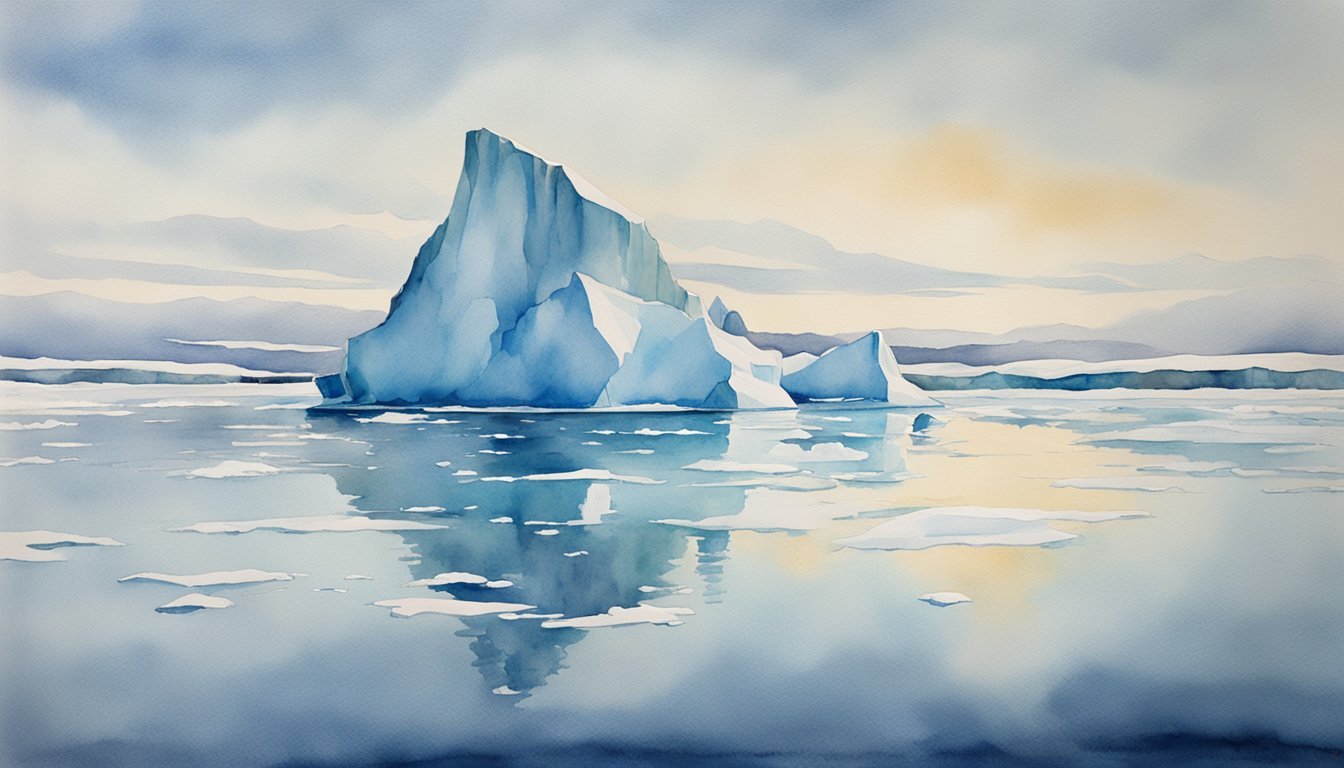Physical Characteristics of the Arctic Ocean

Geographic Overview
The Arctic Ocean is Earth’s northernmost body of water and is considered the smallest and shallowest of the world’s major oceans. With an area of approximately 14,060,000 km^2, this ocean is surrounded by the landmasses of North America, Eurasia, Greenland, and a number of islands. It connects to the Pacific Ocean via the Bering Strait and to the Atlantic Ocean through the Greenland Sea. The Arctic Ocean is also known for its numerous marginal seas such as the Chukchi, East Siberian, Laptev, Kara, Barents, White, Beaufort, and others.
Underwater Topography
The Arctic Ocean has a unique underwater topography with a variety of ridges, basins, and continental shelves. The Lomonosov Ridge is one notable underwater mountain chain that extends across the ocean floor. Other significant features include the Amerasia Basin, Canada Basin, Nansen Basin, Gakkel Ridge, and Alpha Ridge.
Here is a summary of several key underwater features:
- Lomonosov Ridge: An underwater mountain chain that bisects the ocean.
- Amerasia Basin: A major basin in the Arctic Ocean between the Chukchi and Beaufort Seas.
- Canada Basin: The abyssal plain located in the western part of the Arctic Basin.
- Nansen Basin: Located east of the Lomonosov Ridge, bordering the Eurasian continental shelf.
- Gakkel Ridge: The slowest spreading mid-ocean ridge in the world, connecting the Arctic and Eurasian basins.
- Alpha Ridge: An underwater ridge in the Canada Basin, extending from the Arctic Basin to the Canadian Arctic archipelago.
The ocean floor of the Arctic is, on average, 3,406 feet below sea level and reaches its deepest point at 18,210 feet in the Mollow Hole.
Climate and Temperature
The Arctic Ocean is known for its harsh climate and low temperatures. It is mostly covered by ice throughout the year, which influences its surrounding air and water temperatures. Sea ice extent varies seasonally, but during the winter months, it can reach as far south as the Arctic Circle.
The temperature of the Arctic Ocean is influenced by the influx of water from the Atlantic and Pacific Oceans, as well as the local climate. The ocean’s salinity ranges between 30 and 35 parts per thousand, with higher salinity levels found near the ocean floor, where cold, dense water sinks and displaces less saline water.
Sediments from the surrounding landmasses and water currents contribute to the Arctic Ocean’s unique underwater landscape. These sediments contain fine sand, clay, and silt particles that hold clues about the ocean’s geological history and support a diverse array of marine life.
Arctic Ocean Ecology and Human Impact

Wildlife and Ecosystems
The Arctic Ocean is home to a diverse array of wildlife and ecosystems. One of the most iconic species in the region is the polar bear, which relies on sea ice for hunting seals. Other mammals that depend on the Arctic Ocean’s ecosystems include walruses and various species of whales. Due to the unique physical properties of the Arctic waters, such as low temperatures and sea ice coverage, the Arctic Ocean is able to support a high biodiversity of plankton. As the base of the marine food chain, these phytoplankton species are crucial for sustaining fish populations and thus maintaining the balance of Arctic ecosystems.
Natural Resources and Exploration
The Arctic Ocean contains vast stores of natural resources, including oil and natural gas. The region’s abundance of resources has sparked interest from various countries, including Denmark, Norway, and Russia. These areas are keen to explore and exploit the ocean’s oil and gas reserves – often located in the Barents Sea, the Kara Sea, and around the archipelago of Svalbard. However, as the ocean becomes more accessible due to melting polar ice, issues surrounding resource management and ecological conservation arise.
Environmental Concerns
The Arctic Ocean is experiencing some of the most rapid rates of climate change, with consequences ranging from diminishing ice coverage to altered water currents. The melting of glaciers contributes to an influx of freshwater into the ocean, affecting salinity and the Arctic’s delicate balance of ecosystems. Moreover, the increasing accessibility of the region has led to a growing number of human activities, such as fishing and the potential for oil and gas extraction. These activities further threaten the stability and integrity of the Arctic ecosystems, raising concerns for the long-term health of the ocean and its wildlife.
To address these problems, efforts are being made to study and monitor the changing Arctic environment, with initiatives like the “Terrestrial Multidisciplinary distributed Observatories for the Study of Arctic Connections” project aimed at understanding the interconnectedness of Arctic systems. By gaining more knowledge of the Arctic Ocean’s ecology and human impact, stakeholders can work towards the conservation and management of this unique and at-risk region.

